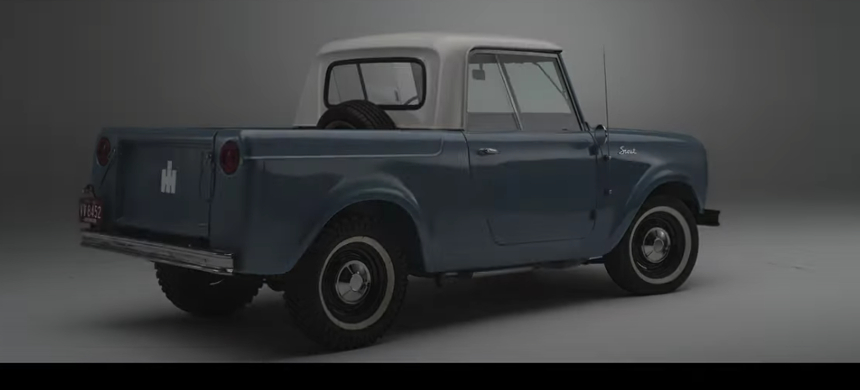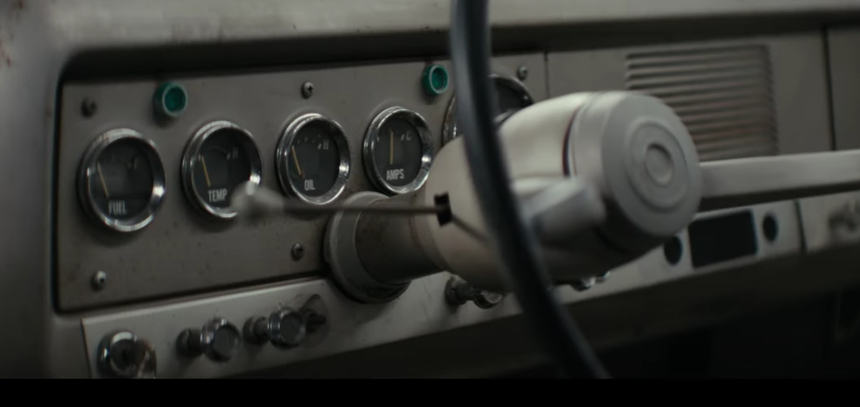Scout “Back To Work” Campaign Pays Homage To The Original
Scout — the newest brand at Volkswagen Group — hasn’t produced anything yet, but it has created some interesting graphics that offer hints about the vehicles it plans to produce. Work has begun on a $2 billion factory 20 miles north of Columbia, South Carolina, that will have an annual capacity of 200,000 vehicles.
That factory is expected to employ as many as 4,000 workers. At the groundbreaking ceremony for the new manufacturing facility, Governor Henry McMaster said glowingly, “Scout Motors will provide thousands of South Carolinians with previously unimagined opportunities and prosperity for generations to come. The Palmetto State, with its rich history, superior people, and sterling automotive manufacturing reputation, is the perfect place to restart this iconic American brand.”
Fancy language and even fancier graphics are all we know about Scout Motors so far. The latest video promoting the new brand offers plenty of hype but no actual information about the vehicles that are in the pipeline. The one thing we can be pretty sure of is they will not feature solid axles attached to a ladder frame by leaf springs with drum brakes all around. And if they have the same minimalist interiors as the original trucks, we will be amazed.
Scout — Before Bronco, Before Blazer, Before Anybody
Here’s how Scout is presenting itself to prospective buyers. It is short on details but long on branding, which seems to fall somewhere in between the Marlboro Man and Harley-Davidson motorcycles.
The messaging is strongly associated with America the way it used to be. There are frequent references to traditional values — heartland, farming, family duty, hard working, optimistic. The American flag features prominently in the video.
The Scout infomercial stresses bedrock principles — a tough truck for tough people. Not built “overseas” but right here in America by American workers using American made parts. It’s a gauzy look back at America in the ’60s and a promise that things could be that way again. And yet, are customers really banging on the factory door, demanding vehicles that look like this?

With seats like this?

and a dashboard like that?

Somehow, we don’t think so. What Scout is selling is an idea, a concept, a vision of America in a simpler time, a time of Father Knows Best, Ozzie and Harriet, and Pat Boone. The video seems to say Scout vehicles will make it possible for us to recapture those days when Wonder Bread said it built strong bodies twelve ways and we believed it.
The company says its vehicles — a pickup truck and an SUV — will be built on a newly designed all-electric platform that delivers credible capability and off-road prowess. With internal engineering focused on attributes including ground clearance, approach angles, robust axles, payload capacity, range, and new digital features, the company assures us Scout products will honor their heritage while injecting fresh American ingenuity into iconic all purpose vehicles.
Bedrock America As Imagined By Scout Motors
There is something faintly amusing about a German company promising to recreate an America before free trade agreements and globalization. Just how did the Scout brand come to be owned by Volkswagen in the first place?
The original Scout was produced by International Harvester from 1960 to 1980. It arguably was the world’s first utility vehicle capable of both off-road adventure and family duty, having pre-dated the original Ford Bronco by 5 years. It was meant to be an answer to the original Jeep, but with a fully enclosed body instead of the Jeep’s canvas enclosure.
International Harvester began building trucks and pickups in 1907. In 1953, it started selling a truck-based people carrier, the Travelall, which was similar to the Chevrolet Suburban. During the late 1950s, International began to design a competitor for the two-door Jeep CJ 4×4. The 1961 model year Scout 80 debuted in late 1960. Its chief designer, Ted Ornas, told a fascinating story of how it came to be, a story memorialized by Wikipedia:
The market potential for a four wheel drive recreational vehicle was an unknown quantity in the early 1950s. The only such vehicle offered in the post-war period was the Willys Jeep, a version of the military jeep produced for World War II. It was a flat sided bare bones product, and American military personnel learned to appreciate its ability to maneuver over rough terrain. Sales volume was very low.
In early 1958, we were directed to develop a concept proposal to enter this small market. Mr. Reese, the engineering manager, said ‘design something to replace the horse.’ There was no product definition to use as a guide. It was even proposed to use the defunct Henry J body tooling. Compound body surfaces were considered too far out for this type of vehicle.
The military jeep was thought to have the correct appearance. Our design sketches with the flat side, no contour look never excited the executive committee. The program began to die. One night while sitting at our kitchen table (full of frustration and desperation), I dashed off this rough sketch on a scrap mat board. It had contoured sides and was designed for plastic tooling. [Note: that sketch is featured briefly in the Scout video.]
The next morning it was shown to a committee member. He reviewed it with controlled enthusiasm, but revived interest in the program. We were off and running. Goodyear produced many plastic parts for WWII and formed a large plastic engineering group. We entered a program with them, a scale model was vacuum formed to simulate body assembly. This model received executive approval for appearance.
By July 1959, Goodyear completed their costing, and because of the high costs, the plastic program was cancelled. By this time, the contoured design met with executive approval and a decision was made to convert the body design to steel. Starting in late July 1959, a full sized clay model was completed, and in November 1959, it was approved. It was a remarkable program with fast paced engineering and manufacturing developments. The total development time of 24 months was a heroic achievement considering the concept was unique and no in-house engine or manufacturing was available or even considered when the program started.
Scout Brand Survives Dissolution Of International Harvester
Despite the modest success of the original Scout vehicles, International Harvester was not profitable and began selling off its assets in the 80s. International became solely a truck and engine manufacturer and brand, and reorganized as Navistar International in 1986. In 2020, Volkswagen agreed to purchase the remaining shares of Navistar.
The rights to the Scout brand transferred to Volkswagen as part of that sale, but languished for almost 40 years before Volkswagen decided to activate its wayback machine and revive the brand. Today, there is nothing left of the original except what might be called “intellectual property” — an idea, a feeling, an ethos associated with the name Scout.
Scott Keogh, who used to be in charge of Volkswagen of America, is now the CEO of Scout Motors. When he talks about the Scout vehicles that are under development, he uses the word “rugged” over and over again. He says that in focus groups, the reaction to the name Scout and the word “rugged” has been overwhelmingly positive. The company plans to tap into that reservoir of positive vibes.
The Takeaway
In other words, Scout Motors is not selling vehicles, it is selling a feeling, an emotional experience that harks back to what many may see as a simpler time — a time before computers and social media, a time when America was the preeminent nation on the world stage. Volkswagen seems to be leaning rather heavily on nostalgia these days, with vehicles like the ID.Buzz harking back to the original Microbus that became the symbol of the Woodstock generation.
That’s a lot of weight for any company to bear. One suspects that customers may say they want a rugged vehicle, but will complain long and loud if the ride is too harsh or the dashboard has no touchscreen. The new company is selling a feeling, a dream, and a sense of nostalgia, but is that enough to transfer into actual sales? “We’ll see,” said the Zen master.
Have a tip for CleanTechnica? Want to advertise? Want to suggest a guest for our CleanTech Talk podcast? Contact us here.
Latest CleanTechnica.TV Video

CleanTechnica uses affiliate links. See our policy here.

